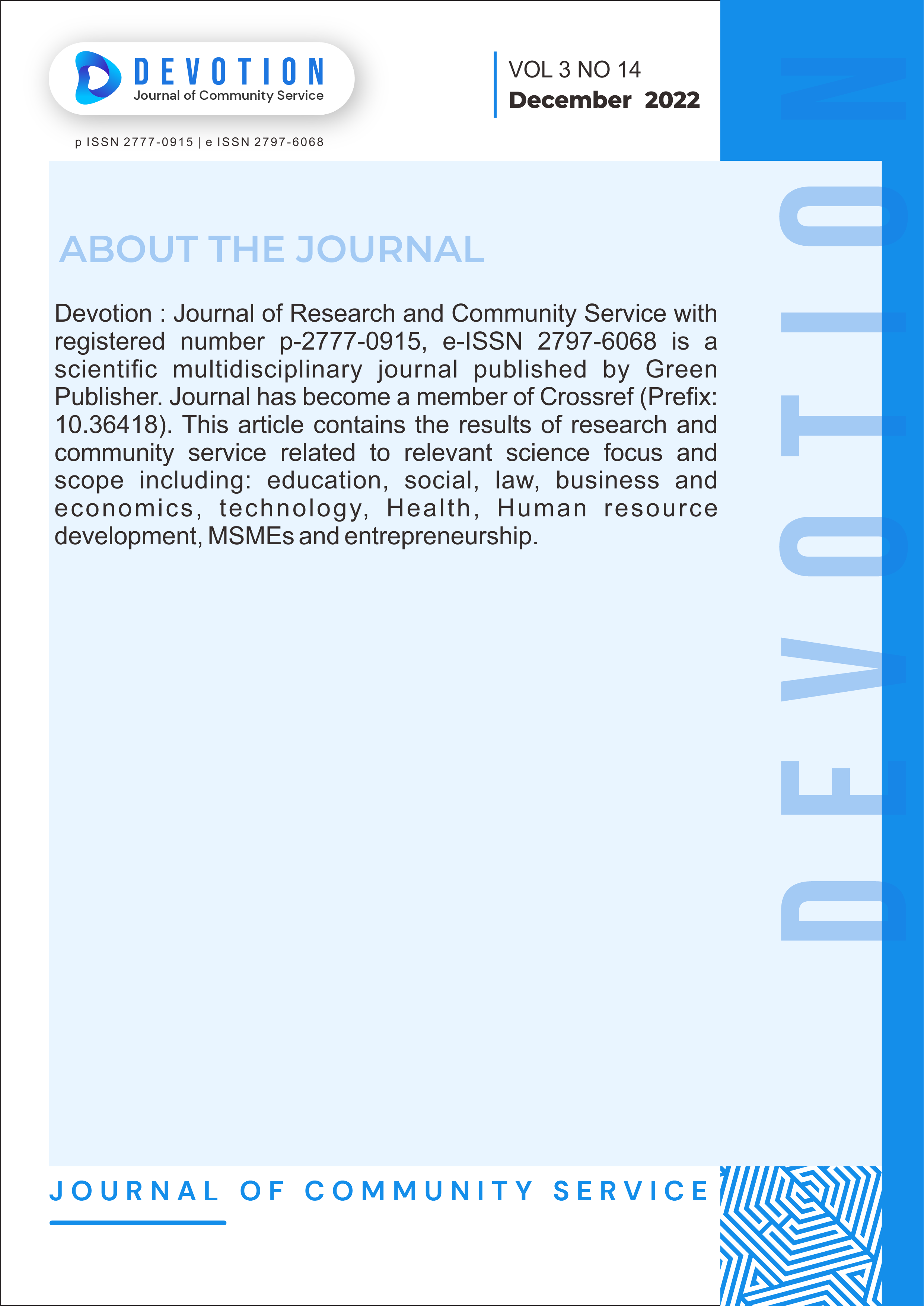Value Engineering In Planning Construction of Ampelsari Reservoir Pasuruan Regency
DOI:
https://doi.org/10.36418/dev.v3i14.324Abstract
Controlling the cost and time of project implementation is important in a project management process. In this research, a value engineering analysis will be carried out on the Ampelsari Reservoir construction plan to determine the most effective and cost-efficient alternative construction design. The application of value engineering to determine the amount of construction cost savings with a work plan includes: Information Stage, Creative Stage, Analysis Stage, and Recommendation Stage. The results of the value engineering analysis in this study obtained construction cost savings of Rp. 1,624,162,703.65 or 6.16% of the total initial design cost, with alternative designs selected in 3 (three) types of work, on Spillway Work with K-225 Reinforced Concrete and Cyclop Concrete work items (A3), on Gate Valve House Work with Concrete Rebate and U-Ditch 30 x 30 work items (B3), on Reservoir Work with HDPE Pipe work items dia. 2.5" (C2). 2.5" (C2)
Published
Issue
Section
License
Copyright (c) 2022 Cornelius Umarwoko Daniarto, Wateno Oetomo, Esti Wulandari

This work is licensed under a Creative Commons Attribution-ShareAlike 4.0 International License.
Authors who publish with this journal agree to the following terms:
- Authors retain copyright and grant the journal right of first publication with the work simultaneously licensed under a Creative Commons Attribution-ShareAlike 4.0 International. that allows others to share the work with an acknowledgement of the work's authorship and initial publication in this journal.
- Authors are able to enter into separate, additional contractual arrangements for the non-exclusive distribution of the journal's published version of the work (e.g., post it to an institutional repository or publish it in a book), with an acknowledgement of its initial publication in this journal.
- Authors are permitted and encouraged to post their work online (e.g., in institutional repositories or on their website) prior to and during the submission process, as it can lead to productive exchanges, as well as earlier and greater citation of published work.













